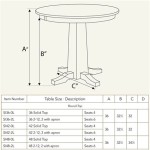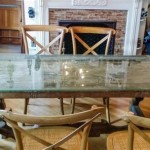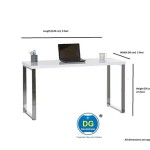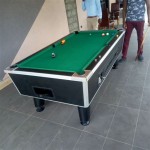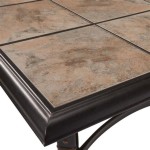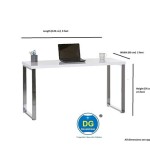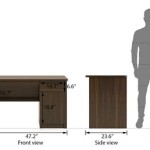The Enduring Appeal of Round Table Round Rugs
Round table round rugs, as the name suggests, are rugs specifically designed to complement round tables. This seemingly simple pairing presents a unique opportunity to enhance the aesthetics and functionality of a room. Unlike rectangular rugs, which are more commonly used and often standardized in size, round rugs introduce softness and visual harmony when placed beneath a circular table. They mitigate the harsh angles often found in interior spaces and create a more inviting and cohesive environment.
The selection of a round table round rug involves careful consideration of various factors, including size, material, pattern, color, and style. The goal is to find a rug that not only fits properly under the table but also complements the overall décor of the room. A well-chosen round rug can serve as a focal point, anchoring the table and chairs while adding texture, warmth, and visual interest to the space. In contrast, a poorly chosen rug can disrupt the visual balance and detract from the overall appeal of the room.
The use of round rugs extends beyond merely a decorative element. They offer functional benefits such as protecting the flooring beneath the table from scratches and spills, dampening sound in the room, and providing a comfortable surface underfoot. Therefore, the practical aspects of a round table round rug are just as important as its aesthetic qualities.
Key Point 1: Sizing and Placement Considerations
Determining the correct size of a round table round rug is crucial for achieving a balanced and aesthetically pleasing look. A rug that is too small will appear insignificant and fail to adequately define the table area. Conversely, a rug that is too large can overwhelm the space and disrupt the flow of the room. As a general guideline, the rug should extend at least 24 to 36 inches beyond the edge of the table on all sides. This allows enough space for chairs to remain on the rug even when pulled out from the table.
The diameter of the round rug should be approximately twice the diameter of the round table. For example, if the round table has a diameter of 48 inches, the round rug should ideally have a diameter between 96 and 120 inches (8 to 10 feet). This calculation provides a comfortable buffer zone and ensures that the chairs remain within the rug's perimeter.
It is also important to consider the surrounding furniture and the overall layout of the room when determining the rug size. The rug should not impede doorways or pathways and should be proportionally sized to the available space. In smaller rooms, a smaller rug may be necessary to avoid overwhelming the area. In larger rooms, a larger rug can help to define the dining area and create a sense of intimacy.
Placement is another crucial factor. The rug should be centered under the round table to create a visually balanced focal point. If the table is positioned near a wall, the rug should be placed equidistant from the wall. This symmetrical arrangement creates a sense of order and harmony in the room. Before making a purchase, it is advisable to measure the space and mark the desired rug size on the floor using painter's tape. This will provide a visual representation of how the rug will fit in the room and help to avoid costly mistakes.
Key Point 2: Material and Style Choices
The material of a round table round rug significantly impacts its durability, comfort, and aesthetic appeal. Common rug materials include wool, cotton, synthetic fibers (such as nylon and polypropylene), and natural fibers (such as jute and sisal). Each material offers unique advantages and disadvantages.
Wool rugs are known for their durability, softness, and natural stain resistance. They are a popular choice for high-traffic areas and provide excellent insulation. However, wool rugs can be more expensive than other options and may require professional cleaning.
Cotton rugs are a more affordable alternative to wool rugs. They are soft, lightweight, and easy to clean. However, cotton rugs are not as durable as wool rugs and may be more prone to fading and wear.
Synthetic fiber rugs, such as nylon and polypropylene, are highly durable, stain-resistant, and easy to clean. They are a practical choice for homes with children or pets. These rugs are often more affordable than natural fiber rugs and are available in a wide range of colors and patterns.
Natural fiber rugs, such as jute and sisal, offer a rustic and textured look. They are durable and eco-friendly. However, they can be less comfortable underfoot than wool or cotton rugs and may be more difficult to clean.
The style of the rug should complement the overall décor of the room. A traditional room may benefit from a classic Persian or Oriental rug, while a modern room may be better suited to a geometric or abstract design. The color and pattern of the rug should also coordinate with the existing furniture and accessories. Neutral colors and subtle patterns can create a calming and sophisticated look, while bold colors and patterns can add visual interest and personality to the space.
Key Point 3: Considerations for Functionality and Maintenance
Beyond aesthetics, the functionality of a round table round rug is a key consideration. The rug should provide adequate protection for the flooring beneath the table. This is especially important for hardwood floors, which can be easily scratched or damaged by chairs and spills. A rug pad placed underneath the rug can provide additional cushioning and prevent the rug from slipping.
The rug should also be easy to clean and maintain. High-traffic areas require rugs that are stain-resistant and can be easily vacuumed. Wool and synthetic fiber rugs are generally easier to clean than cotton or natural fiber rugs. Regular vacuuming is essential to prevent the build-up of dirt and debris. Spills should be cleaned immediately to prevent staining.
Professional cleaning may be necessary for certain types of rugs, especially wool or delicate fabrics. It is important to follow the manufacturer's instructions for cleaning and care to ensure the longevity of the rug.
The pile height of the rug should also be considered. A low-pile rug is generally easier to clean and less likely to trap dirt and debris. A high-pile rug can provide more cushioning and warmth but may be more difficult to clean. The choice of pile height depends on personal preference and the specific requirements of the space.
In addition to cleaning, regular rotation of the rug can help to distribute wear evenly and prevent fading in certain areas. This is particularly important for rugs that are exposed to direct sunlight. Proper maintenance will ensure that the round table round rug remains in good condition for many years to come.
Selecting the right round table round rug involves a careful balance of aesthetic and functional considerations. By paying attention to size, material, style, and maintenance, it is possible to find a rug that not only enhances the beauty of the room but also provides lasting comfort and protection.

Rules Of Thumb For Rugs Under Round Dining Tables Inspiration

Rules Of Thumb For Rugs Under Round Dining Tables Inspiration

6 Rules For Choosing A Dining Room Rug Pretty Souces Stonegable

7 Dos And Don Ts When Styling Your Round Rug The Ruggable Blog A By Under Dining Table Kitchen

Rules Of Thumb For Rugs Under Round Dining Tables Inspiration

Best Dining Room Rugs 2024

Think Outside The Box With Round Rugs Floorspace

Simple Rules For Dining Room Rugs Floorspace

Round Jute Rug Grey Pottery Barn

Fl Round Dining Table Rug By Marcel Wanders Interior Design Ideas
Related Posts

